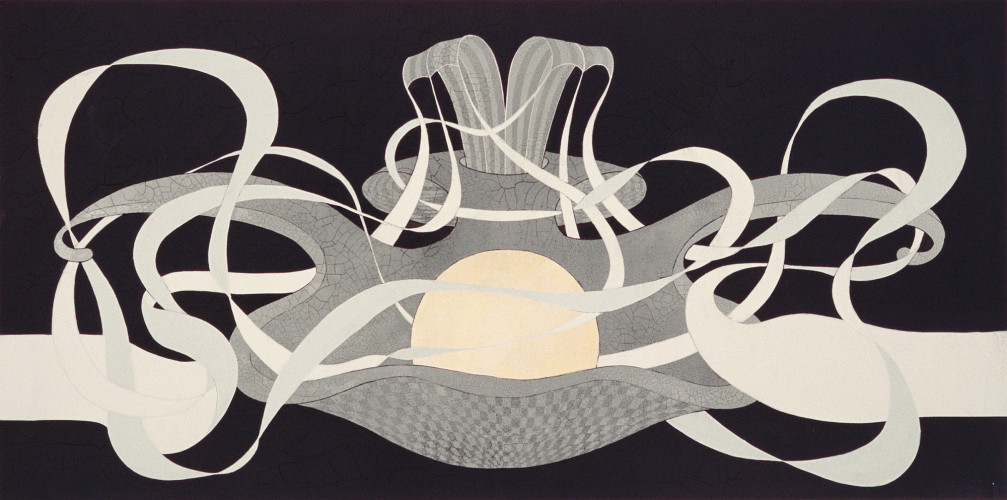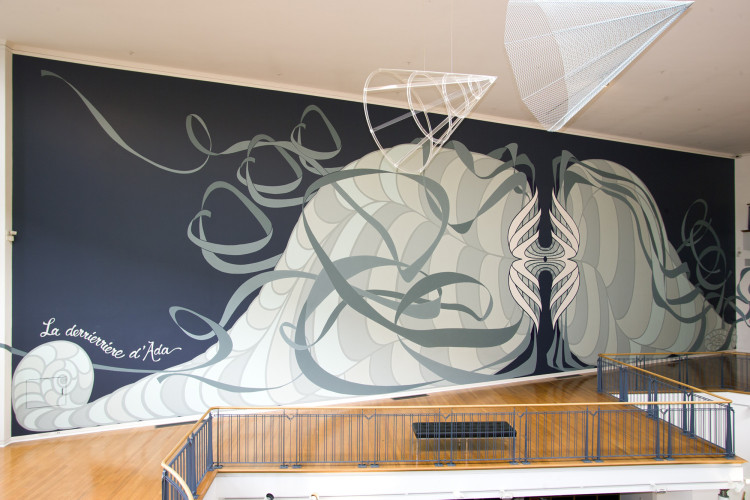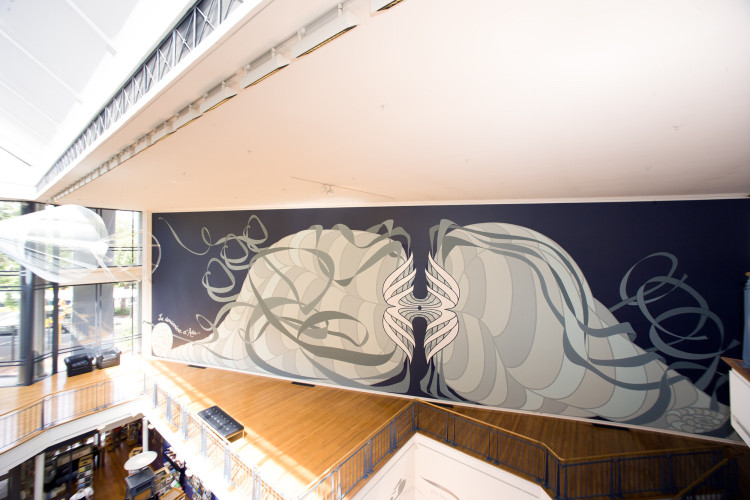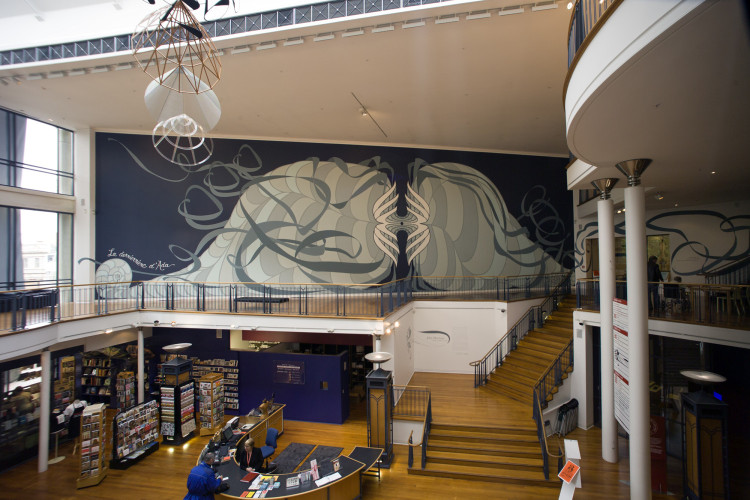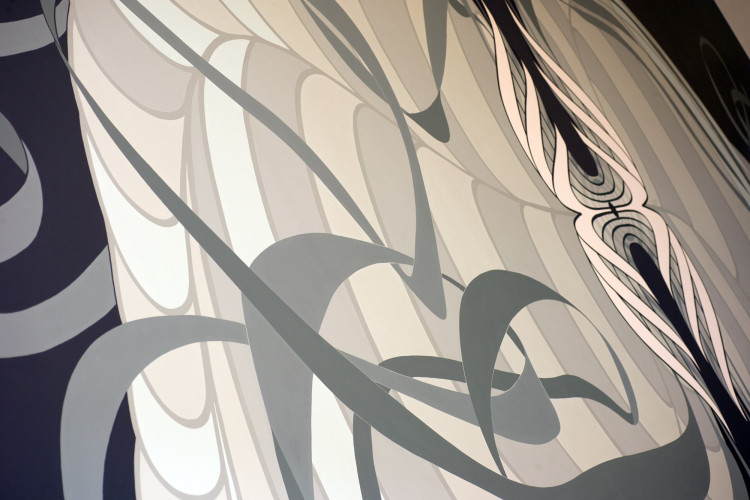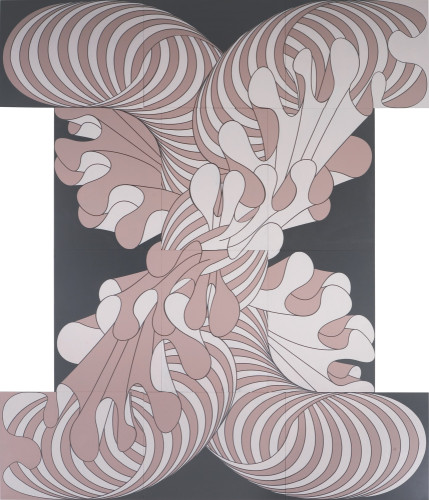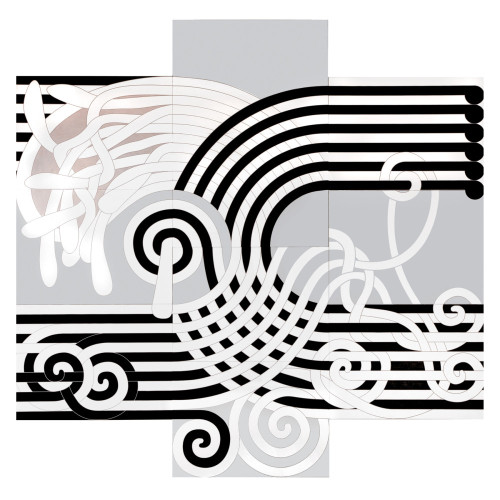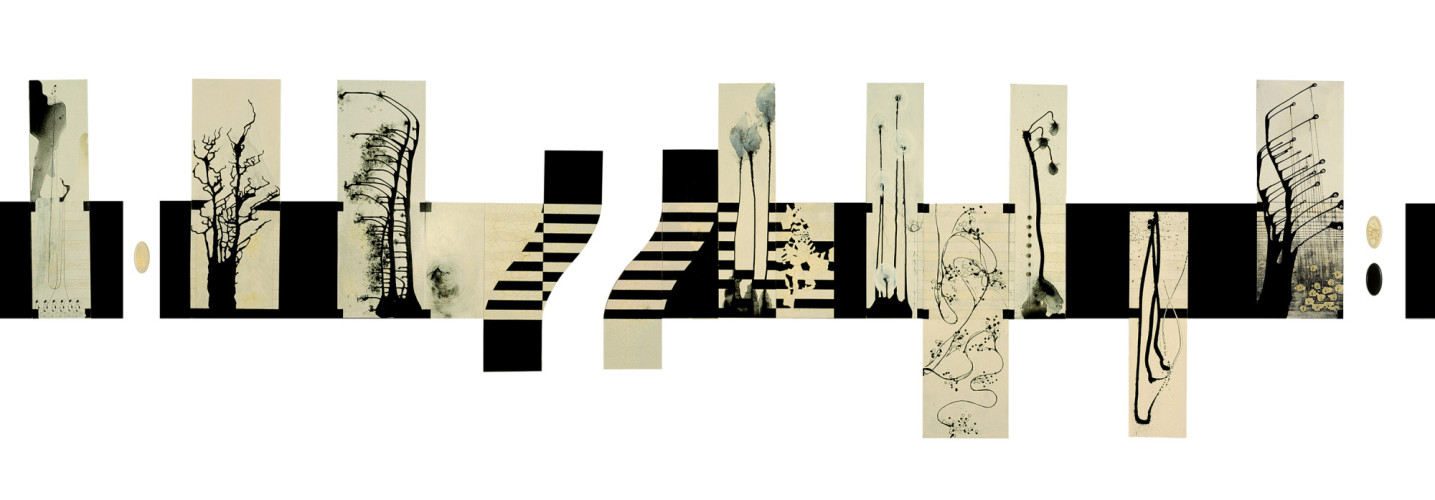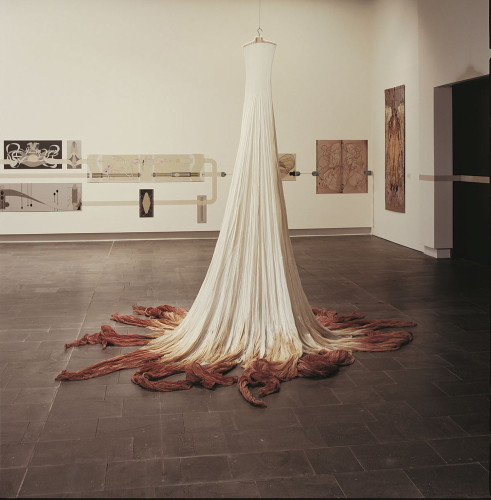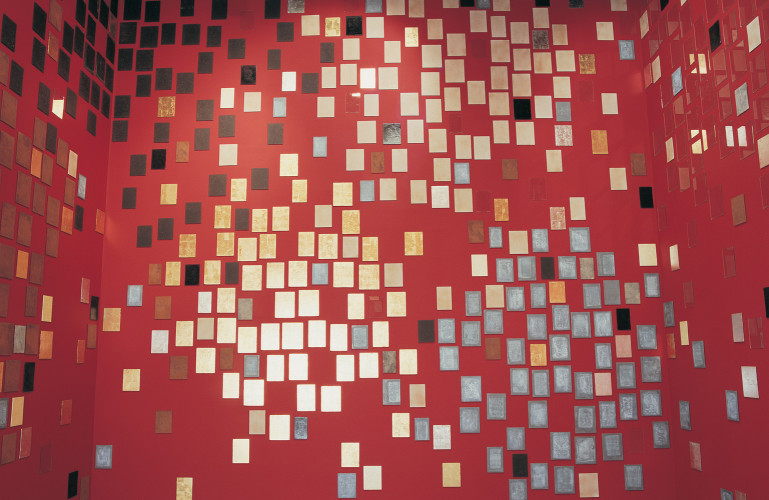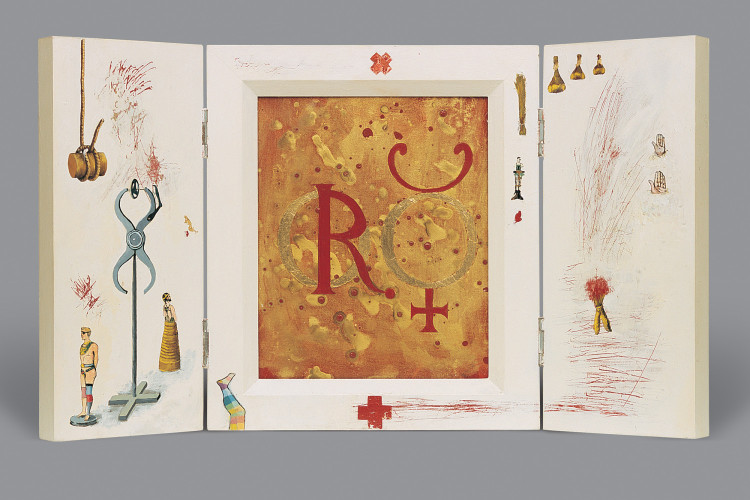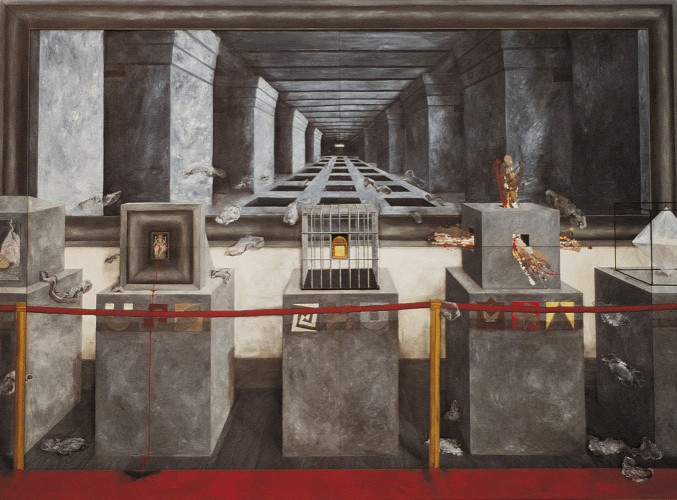Julia Morison
a loop around a loop
9 December 2006 - 15 April 2007
Early in her career, Julia Morison explored geometric relationships in tautly balanced, hard-edged abstract paintings. Increasingly, however, she felt limited by this way of working. In 1986, with Vademecum, she devised a practical methodology based on the Sefirothic tree from the Jewish mystical tradition known as Kabbalah. The tree was a diagram used by Kabbalists to describe the universe in terms of ten dynamically related categories.
Using this framework, Morison generated a series of major works, many featured in this room and each intended to contribute to a vast and endlessly cross-referencing system. She invented her own iconography of signs, and also began to reconnect the ‘neutral’ forms of abstraction – such as crosses, circles, squares, and triangles – with their symbolic origins.
It was during this period that Morison began her distinctive use of ten materials: lead, ash, clay, excrement, ‘reflection’, blood, mercuric oxide, silver, gold and ‘transparency’. Each substance has different associations, and, by creating relationships between them, Morison was able to explore many possible oppositions – such as that between the body and the spirit, or between the base and the ideal. The use of these ten substances can be found in many of Morison’s works, including the
Material Evidence dresses throughout the exhibition spaces. Despite the formidable order and precision of the system underpinning them, the richness and mystery of the works in this room suggest Morison’s growing scepticism that even the most methodical human system could adequately express all the wonders of the world.
In Julia Morison’s Christchurch studio, a jar filled with lustrous pearl beads sits next to one bristling with the bodies of dead cicadas. A fascination with the collision between the beautiful and the grotesque is an important aspect of Morison’s practice, and one of several inspirations for the works in this room.
Although often scaled and arranged according to a pre-set mathematical formula, Morison’s recent works embrace the Surrealist desire to bypass strictly rational methods and harness the mind’s limitless capacity to dream and invent. Games, prompts and collaborative interventions allow Morison to pull off a series of impressive and beguiling visual fantasies. Exploiting happy accidents and unusual tangents, Morison often generates meaning through the unpredictable behaviour of her materials.
The longer you look, the more you see in them. Tangled intestines roil like serpents, tubes swell and twist, entering and exiting a dazzling array of openings, while bulging breasts and buttocks wriggle free of a restrictive corset. With lively abandon and gleeful humour, Morison animates the sexiest, most monstrous creature the Surrealists could ever have imagined: the human body.
A partnership project between Christchurch Art Gallery Te Puna o Waiwhetu and Dunedin Public Art Gallery
This exhibition included a work on the Dunedin Public Art Gallery's Big Wall.
